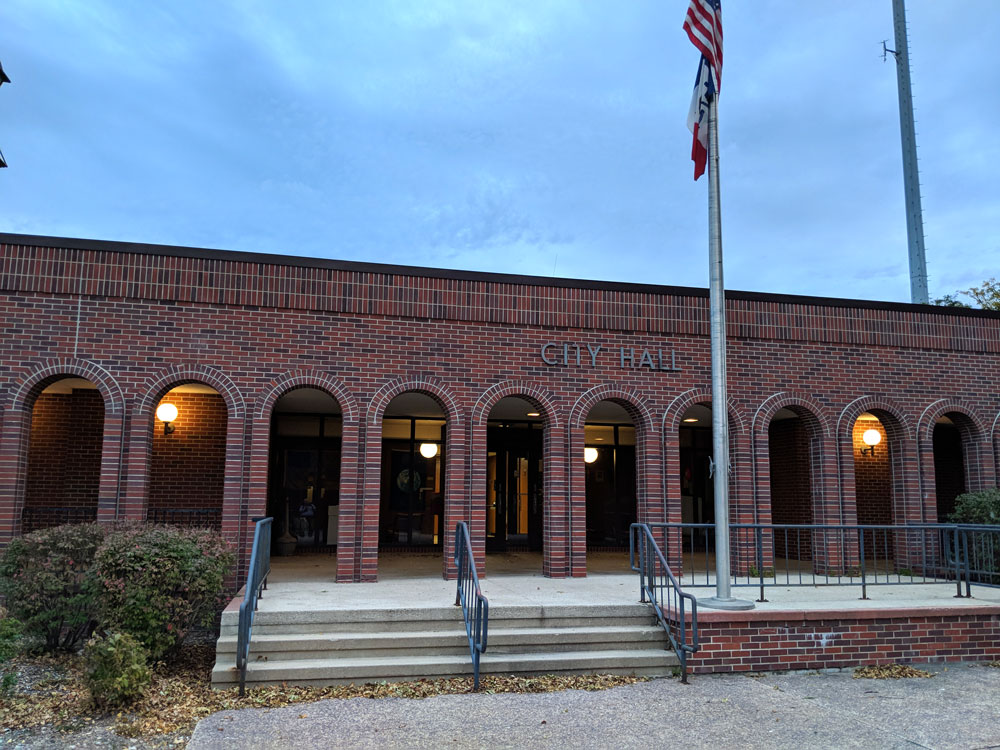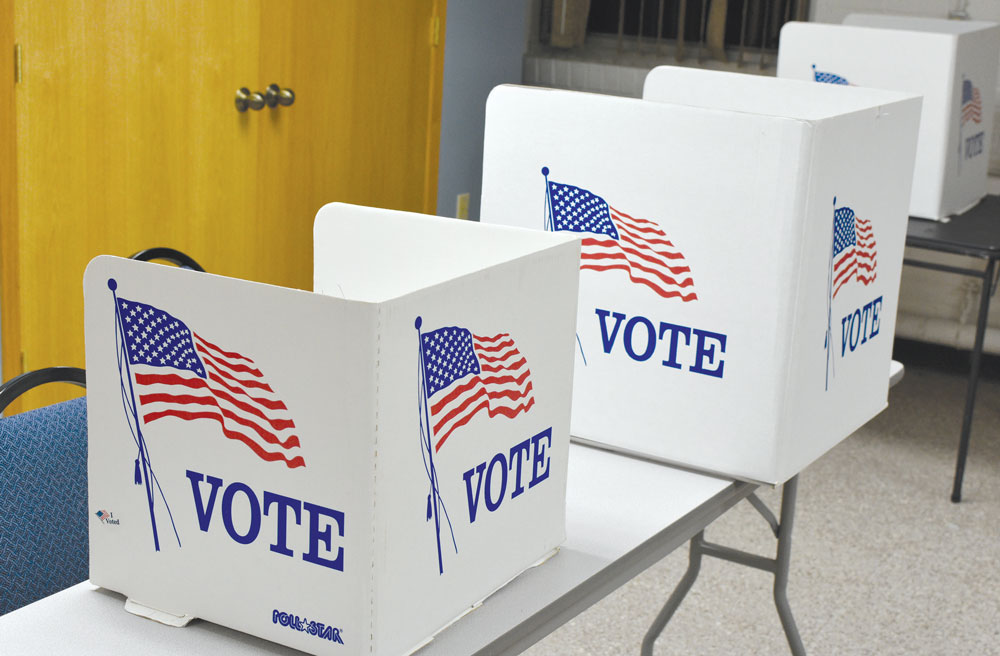Floyd County voters will decide on EMS levy
By Bob Steenson, bsteenson@charlescitypress.com
Floyd County voters will decide in November whether the county can collect tax money to support emergency medical services for a period of 10 years, raising an amount up to $556,000 each year.
The county Board of Supervisors voted unanimously at its meeting Monday morning to put the EMS support levy question on the Nov. 8 general election ballot. The ballot question proposes allowing a combination of up to a 1% state income tax surtax along with up to 57¢ per $1,000 of taxable valuation in property taxes, with the total of the two not to exceed the $556,000 annual figure.
 The total amount collected and what combination of taxes would be used would be decided each year as part of the budgeting process by the supervisors in office at that time, with recommendations from a county EMS Program Advisory Council.
The total amount collected and what combination of taxes would be used would be decided each year as part of the budgeting process by the supervisors in office at that time, with recommendations from a county EMS Program Advisory Council.
The measure will need to be approved by at least 60% of the people voting on the measure in order for it to pass.
There were a couple of people at the meeting who questioned whether the issue was being pushed through too quickly, and whether the amount that could be collected each year was too high.
In this current fiscal year, Charles City and Floyd County are paying American Medical Response (AMR) $200,000 to support ambulance service in the city and Floyd County. That amount is split equally between the city and the county, and has increased from $150,000 two years ago to $175,000 last year.
The current three-year contract with AMR expires June 30, 2023, and although no new contract has been negotiated yet, AMR has indicated it will ask for $226,000 in the first year of a new contract with about a 5% increase each year after that.
A person at the meeting pointed out that using those AMR numbers, the average cost per year for AMR service over 10 years would be about $284,000, only about half of the $556,000 maximum being requested.
 Supervisor Roy Schwickerath, who has been part of two boards that came up with the $556,000 recommendation – but has not voted on the issue before it came before the Board of Supervisors – said the ballot issue is about the levy, not the service, and there were no guarantees what service would cost in the future or who would provide it.
Supervisor Roy Schwickerath, who has been part of two boards that came up with the $556,000 recommendation – but has not voted on the issue before it came before the Board of Supervisors – said the ballot issue is about the levy, not the service, and there were no guarantees what service would cost in the future or who would provide it.
The other issue is that several other agencies provide EMS service in Floyd County – the Nora Springs Ambulance Service, Marble Rock Fire/Rescue first responders and the Greene Volunteer Ambulance Service. All of them are struggling to continue providing service and need support if they are to continue, he said.
The recommendation for the up to $556,000 annual figure that was made to the supervisors by the Floyd County EMS System Advisory Council included funding for all those EMS service providers, as well as to the Floyd County EMS Association for training and education.
The figure includes up to $424,000 annually for countywide service, with the other up to $132,000 divided among Nora Springs Ambulance, Greene Ambulance (for calls in Floyd County), Marble Rock first responders and the county EMS Association.
Gordon Boge, president of the Coalition for Better County Government, said all those other providers seem to be working now, so why do they need all this additional funding.
Schwickerath said now they’re getting by on pancake breakfasts and other fundraisers, and “you know if you look down the road that’s a problem.”
In other meetings, EMS representatives have said it’s difficult getting people to volunteer for these services, in part because of the cost of getting certified. Some of the funding could be for that training. Another looming problem for several of the agencies is the cost of equipment replacement, including ambulances. The county levy could help with those expenses as well.
Much of the reason for the need for additional support for ambulance services is being blamed on changes in the last several years in reimbursement rates for EMS services, both by private insurance companies and by public services such as Medicare and Medicaid.
Schwickerath said at Monday’s meeting that there is no way to predict what future ambulance services will cost. Three years ago, he said, AMR was paying the city for ambulance storage space and for ambulance drivers, and it was paying the county for dispatching services. Now the city and the county are paying AMR to subsidize the cost of service.
The $556,000 figure was developed through the work of two county boards. First, the Floyd County Ambulance Commission discussed ambulance service options – including whether to continue subsidizing service from AMR, or to look for other service providers or to start the county’s own publicly run ambulance service.
The commission came up with a figure of $424,000 annually as the cost to continue with AMR while also being able to collect enough money if future boards of supervisors decide to begin covering the costs of starting a new public ambulance service.
Both Boge and another person at the meeting questioned if the issue was being pushed through too quickly before enough information was known.
Schwickerath said the timeline is dictated by Iowa code, and 60 days notice had to be given before the supervisors could first discuss a resolution for a vote, and another 60 days notice has to be given now before the election.
County Auditor Gloria Carr has said the decision had to be made this week in order to get the question on the ballot for the Nov. 8 election.
Patrick Lumley, the chair of the EMS System Advisory Council that made the recommendation to the supervisors to put the issue on the ballot, said the Floyd County Ambulance Commission had been discussing the issue since March.
Boge asked if the 1% income tax surcharge would be enough to raise the entire amount needed, so they could avoid raising property taxes, but Schwickerath said information he had received from the Iowa Department of Revenue was that an estimated $137,000 was the amount that the surtax could raise in 2023, and that would fall to $105,000 by 2028 because of changes the state had made to reduce the total amount of Iowa property tax that will be collected.
“So it’s going to go back on the property taxes then?” Boge asked.
“Whatever isn’t available on surtax, absolutely, we’re going to collect through property tax. You are right,” Schwickerath answered.
The resolution to put the issue on the ballot and set the wording for the ballot passed with all three supervisors supporting it.
Also at the meeting Monday morning:
• Auditor Carr reported that the current timeline on the law enforcement center and courthouse update project is for work on the third floor where the district courtroom is located to be completed by the end of September. The fourth floor, where the sheriff’s office and jail used to be located, and which now will be the location for the county attorney’s office, clerk of court office and magistrate courtroom, should be finished by mid-October, with any remaining work and final punch-list items taken care of after Thanksgiving and into December.
“It’s always subject to change, and does, frequently,” Carr said.
• Approved spending $36,508 in American Rescue Plan Act funds for an emergency backup generator and installation for the county Department of Public Health offices, to power refrigeration equipment for vaccine storage and other emergency uses.









Social Share